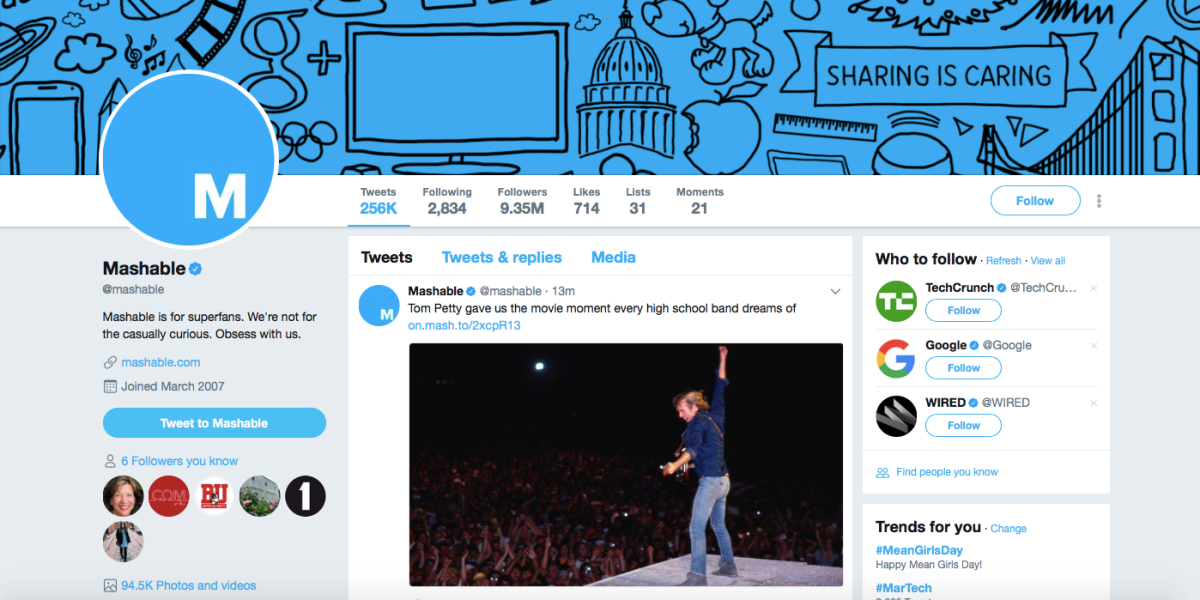Seeing that Mashable calls itself “the go-to source for tech [and] digital culture,” it would have been pretty disappointing to find that company doesn’t utilize Twitter.
Thankfully, this isn’t the case.
Mashable was an early adapter of Twitter, joining the platform in 2007, approximately one year after the social site was created. Currently, the media company tweets to a following of approximately 9.4 million people.
For followers of @mashable, the odds are high that they will find one of the company’s tweets at the top of their Twitter feed, as the organization tweets every few minutes.
Every Mashable tweet incorporates an element of multimedia, whether it is an embedded video, photo, or gif. Each tweet is related to a piece of content on the Mashable website, which conveniently opens in a new tab upon being clicked on.
In addition to tweeting their own content, Mashable frequently incorporates tweets into their articles, showing that they actively monitor the social media site.
In a recent article published by Mashable called “Celebrities remember Hugh Hefner–the good and the bad,” the author provides a convenient list of celebrity tweets relating to Hugh Hefner, for those of us curious about their reactions to the passing of the controversial mogul.
Rather than simply post a list the tweets, the author provides her own analysis, splitting the tweets into those praiseworthy and those critical of the late “Playboy” founder.


Often, Mashable incoporates- or centers entire articles around- tweets from “ordinary citizens” to demonstrate the public’s opinion of a subject. These pieces are often formatted as “The Internet Reacts/Responds to; Thinks/Is Convinced that…”
For example, “The internet is convinced Kevin Durant is arguing with trolls on secret social media accounts,” “The internet rips Joel Osteen for slow response to Houston’s Harvey victims”and “Twitter increases character limit to 280, internet erupts into flames” all center around the public’s reaction (via their tweets) to current events.
In sum, Mashable is active on Twitter, both as a broadcaster and listener. To further improve its Twitter presence, I believe that Mashable could increase its replies/reactions with other users on the platform, rather than use it simply as a means to broadcast their own articles. When I clicked on @mashable’s “tweets with replies,” to search for interactions with other twitter users, I was left empty-handed. Mashable could benefit from communicating with people directly on their platform because it makes the public feel more connected to the site, and like their opinions are being heard.
